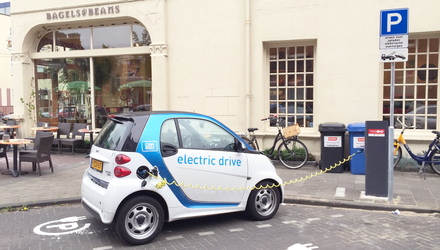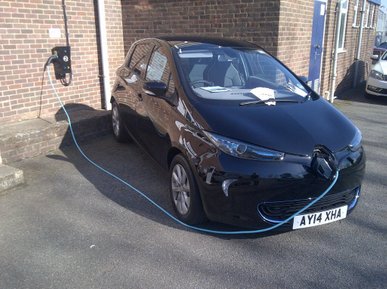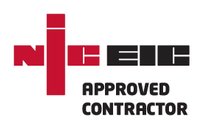

FAQ's

What to consider 1st
The Challenges:
The location
Most EV charging will be carried out at an individual’s own domestic property, therefore it is paramount that the correct unit is installed and in the correct location to easily connect to the vehicle - i.e. close enough to where you park your vehicle.
Eligibility for grant funding
One major consideration is whether the installation is eligible for the Electric Vehicle Homecharge scheme funding. Please refer to the full eligibility criteria, which covers the vehicle, the customer and the location. You do not need to apply for the grant separately or pay the full price of the charge point and then reclaim the benefit. The process of claiming the grant and building it into the price you pay for the charge point is all taken care of bySNC as the installer of the charge point.
Power supply
As the charging is being done at home then the power supply required should be considered. If you only have a 16 amp supply then this should be fine, as it will provide you with sufficient power to charge your vehicle overnight. An EVCP requiring a 32 amp supply would charge your vehicle quicker, but you may not have a 32 amp supply available. As you typically charge your vehicle overnight, a faster rate of charge is unlikely to be needed.
No off-street parking?
Many areas of the UK, including large parts of our cities, have residential areas where off-street parking is not an option, presenting a barrier to plug-in vehicle adoption for many residents. If you do not have off street parking, your Local Authority may be able to help via a central Government grant to install a charge point by or near to your home. For this to be possible, your Local Authority must have applied to join the scheme which makes this funding available to them. Contact your Local Authority for more information.
13 amp domestic socket
| An electric vehicle can be charged using a “trickle charge” from a domestic 13 amp socket (which is referred to as Mode 2 charging), but this is the slowest form of EV charging available and can take approximately 10 hours to charge the battery fully. A dedicated electric vehicle charge point is therefore recommended, which will allow you to charge it fully at a much faster rate.
|
16 amp or 32 amp? | If your charge point is a 16 amp unit it will comfortably charge your electric vehicle overnight in approximately 6 hours. A more powerful 32 amp unit will charge it at a faster speed, taking approximately three hours to fully charge your vehicle. You will only need to consider having a 32 amp unit, if you need to charge your vehicle at home at more regular intervals during the day. However, many houses do not always have a 32 amp supply available, so check first with you your SNC installer. |
A Type 2 socket
| For a domestic charge point you have the option of buying an electric vehicle socket, rather than a charge point with a fixed (tethered) lead. So what is the difference? An EV socket (also known as a Type 2 socket) allows you to charge your vehicle, by plugging in the charging lead that you need to keep in your vehicle, so you can charge it using charge points at your workplace or other locations (e.g. a car park). By installing a Type 2 socket at home, it also means that any friends/family with an electric vehicle can charge up when they come to visit, as all charging leads have the same type of connector that plugs into a charge point.
|
You will need to recharge your vehicle at home, typically overnight. You can use an existing mains socket, but this will only allow you to charge your vehicle at the slowest
speed possible, so an electric vehicle charge point is recommended.
Grant funding – you can get up to 75% (capped at £500 inc VAT) for the cost of your charge point and its installation funded by the Government, through their Electric Vehicle Homecharge scheme. To qualify you need an off-street location for your charge point.
Type of charge point – depending on your driving habits, you may need a charge point
which can charge your vehicle at a faster rate than that typically used for a full overnight charge. Your Energeasy Drive installer will also be able to advise you.
Location – you need an off-street location, where you can wall mount your charge point. If wall mounted is not possible, you can have a free standing charge point.
1. Will I qualify for the Government grant funding and how do I claim it? | The Government Grant Funding Scheme via OLEV (Office for Low Emission Vehicles) is called the Electric Vehicle Homecharge Scheme. The main qualification criteria is that you are the registered keeper, lessee or primary user of an eligible electric vehicle and that you have off-street parking. The grant claim will be completed by SNC as your OLEV accredited installer. |
2. What vehicle have you purchased?
| The vehicle you buy (in this example BMW i3) is relevant, as you need to ensure you have the correct connector type required on your charge point that will fit the power inlet on your car. |
3. What charging requirements do you have? | A charging unit with a lead attached (tethered lead), so you can quickly plug the vehicle into the electric vehicle charge point (EVCP). A faster rate of charging during the day may be required, if the vehicle is often used for multiple business or other trips during the day |
4. Do you have a spare power supply for the EVCP?
| An EVCP needs to be supplied by a dedicated circuit on your distribution (fuse) board. If there isn’t a spare circuit, then SNC will need to upgrade it, which will increase the cost of installation. |
5. Does your installer need to earth the circuit?
| SNC will need to refer to IET Code Of Practice for Electric Vehicle Charging Equipment Installation to determine if additional earthing is required, which may increase the installation cost. |
6. Where would you prefer to locate your charge point?
| The outside of the garage, which is adjacent to the driveway and can utilise the distribution (fuse) board in the garage, as it has a spare circuit available. Not all garages will have this. |
The Solution: A Case Study
In this scenario the unit that was quoted was a 32 amp Type 2 tethered lead domestic charge point. This is because BMW i3s hove a Type 2 vehicle inlet connector (7 pin) and the customer preferred the idea of being able to plug straight into the vehicle as soon as they parked up.
The unit was installed on the side of the garage utilising a dedicated spare 32 amp circuit that the garage unit was able to supply, as this was close to where the vehicle will be parked. As the customer works from home and needs to charge their vehicle up faster during the day (as well as during the night), the more powerful 32 amp unit was installed whichdelivers a faster speed of charge.
The customer met the eligibility for the Homecharge scheme, so they chose SNC an OLEV Accredited Installer to complete the installation, allowing the customer to claim 75% of the product and installation costs through the grant scheme (capped at £500 inc VAT).
SNC took care of ensuring that they were able to transmit data as per OLEV’s requirements and took care of the paperwork for the claim.



.png?etag=%2218f4-58e171ab%22&sourceContentType=image%2Fpng&ignoreAspectRatio&resize=200%2B88&extract=0%2B0%2B182%2B88)
